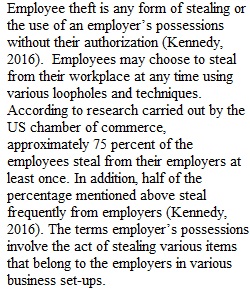


Q Your writing assignment this week is to complete the final section, Decision, and compile all of the elements from the previous weeks into a coherent seven-page paper analyzing an ethical dilemma in the workplace. This assignment is due at the end of Week 7. Decision: Make a decision and state it clearly, including why it is best. Justify it and defend it against criticism. How will you carry it out? Who will object to the decision? What are the weaknesses of the decision? How will you defend the decision? Explain how you would solve the problem and whether your solution is ethical and legal. This section should be at least two pages. The paper must contain all of the sections from previous weeks and have these section headings. • Introduction • Background of the Real Case: Provide an example regarding how the dilemma exists in a real-life situation. • Ethical Dilemma(s) • Application of Ethical Theory • Application of the Law • Potential Solutions and Impacts: Analyze the efforts being made by those in the profession to resolve the dilemmas (rules, standards, etc.). Describe the possible consequences if one behaves unethically in the situation. • Decision • References: Sources must be cited and documented using APA style. The paper should include all of the areas above. It should be written in your own words and be well researched, well reasoned, and well documented. Your assignment will be graded on your demonstrated understanding and application of course material, your critical thinking and creative solutions, and your organization and grammar. Please refer to the Ethical Dilemma Project Overview in the Introduction and Resources Module for details. Please use the template Week 7: Ethical Dilemma Project: Final Paper (Links to an external site.) to complete this assignment. Please review the rubric and don't forget to submit your assignment. Rubric Some Rubric Some Rubric Criteria Ratings Pts This criterion is linked to a Learning OutcomeKey Concepts Responds directly to the assignment and compiles all project elements from the previous weeks with ideas arranged in a clear, logical consistent order using section headings provided in the template; introduces the paper's purpose; includes a definition of the term from a reputable source; discusses the seriousness of the ethical problem and supports the claim with specific evidence; provides background about the real case that was selected to illustrate the ethical dilemma; names and analyzes the ethical dilemma; applies three ethical theories to the case and demonstrates how each ethicist would respond to the case and resolve the problem; discusses applicable laws, standards, and codes of conduct that are relevant to the case; discusses potential solutions and impacts and effects on various stakeholders; offers a thoughtful solution based upon ethical principles; makes a decision and evaluates and defends that decision according to ethics, the law, and the profession 80 to >0.0 pts Full Marks 0 pts No Marks 80 pts This criterion is linked to a Learning OutcomeDecision States a decision about what should be done and evaluates and defends the decision, explaining whether the solution is ethical and legal Note: This section is the newest element of the project and is embedded in the Key Concepts criterion above. 50 to >0.0 pts Full Marks 0 pts No Marks 50 pts This criterion is linked to a Learning OutcomeWriting Factors Writing demonstrates reasoning, critical thinking, and analytical abilities in applying ethical issues in the professions. Uses the APA template provided; documents sources with in-text citations and a references page; reflects clear organization and correct grammar and mechanics; meets length requirement. 20 to >0.0 pts Full Marks 0 pts No Marks 20 pts Total Points: 150
View Related Questions